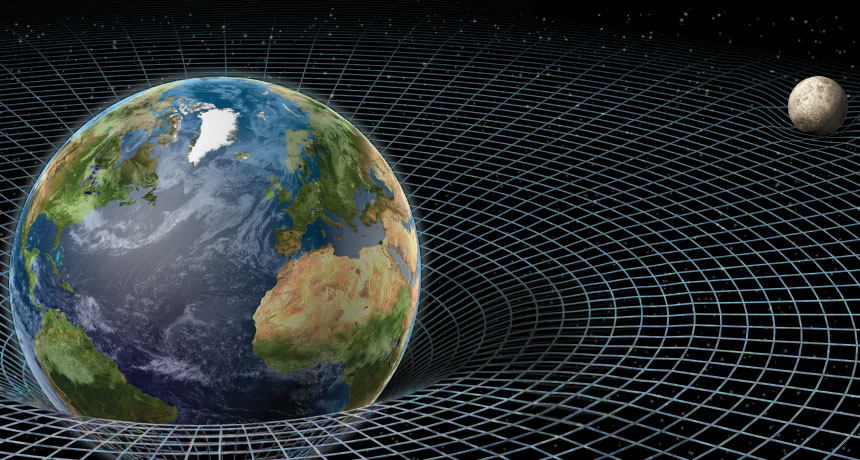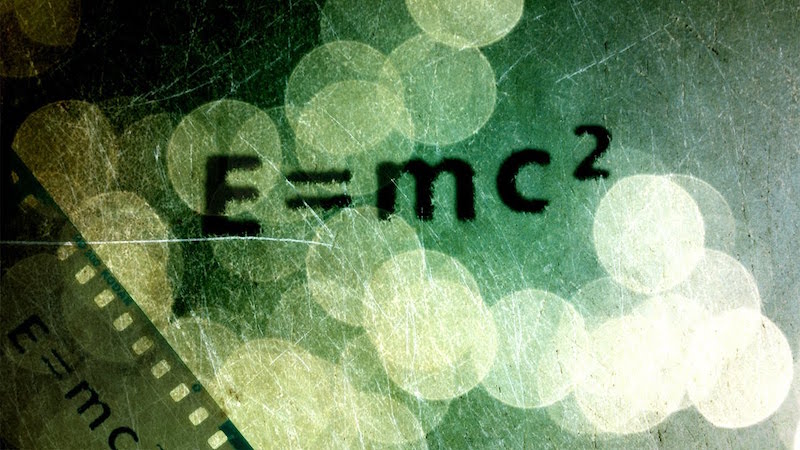There are some startlingly simple questions that science can’t answer. And then there are the special occasions where the universe up and does a freaking magic trick that seems to be designed by an unjust, all-powerful entity dedicated to making scientists slowly pull off their glasses while saying, “What in the hell?” For instance …
6. The Sun Can Make Stuff Hotter Than Itself

We intuitively understand the direction that energy travels — from the thing with energy to the thing with less energy. That’s why the second law of thermodynamics is among the first things you learn in science class that makes you say, “Well, sh*t, I could have told you that.” If you’re too hot, you move away from the campfire, not toward it. You don’t need science to tell you that heat energy travels from the hot thing to the less-hot thing. Well, everywhere in the universe except the sun.
There’s a discrepancy between what science says should happen and what the sun actually does, and it’s known as the sun’s coronal heating problem. Essentially, when heat leaves the sun, the laws of thermodynamics just totally break down for a few hundred miles, and nobody can quite figure out why.
The facts are pretty straightforward; the sun’s surface sits comfortably at a blazing temperature of roughly 5,500 degrees Celsius. No problem there. However, as the heat travels from the sun’s surface to the layer a few hundred miles away from its surface (known as the sun’s corona), it rises to a temperature of 1,000,000 degrees Celsius. Which is 995,000 degrees Celsius, or 1,791,000 degrees Fahrenheit, or 1 billion gigawatts per 1/4 gigabyte jigawatt hour (metric) hotter than it has any right to be.
The heat source (the giant ball of nuclear explosions and plasma) should be the hottest thing, not the empty vacuum of space around it. This is the only instance in the known universe where the thing doing the heating is actually cooler than the thing it’s heating.
And it’s been plaguing solar physicists worldwide since they discovered the little disagreement reality has with our universe in 1939. How is it possible that the area around the sun is about 200 times hotter than its surface? It’s not, according to the second law of thermodynamics and everything else we’re supposed to know about how the universe works.
5. When You Look Closely, Gravity Stops Making Sense

There’s a certain order to the world. Mice get eaten by wolves, motorcyclists get demolished by 18-wheelers and gravity presides over the whole crazy parade, keeping it stuck to the ground like a boss. Understanding where forces rank compared with one another allows us to predict and explain all the different ways in which they will interact. The problem is that gravity, the one force that’s involved in just about every interaction that happens here on Earth, is kind of all over the map.
When you look at it up close, gravity is decidedly on the mouse side of the hierarchy. Rub a balloon on your wool sweater (nice sweater, nerd) and pass it over a piece of paper. The tiny electromagnetic charge your sweater transferred to the balloon will lift the paper off the table, overcoming the Earth’s gravitational pull. That’s the same gravitational pull that tethers the moon in orbit around Earth. Up close, gravity gets its ass handed to it by a bond that’s about as strong as worn-out Velcro. But over a distance of 234,000 miles, it acts like the chain on a mace being swung around the head of a planet-sized Viking.
This is what’s known as the Higgs mass hierarchy problem. Gravity has a tendency to wreak havoc on scientific hierarchies because the closer you look at it, the more likely it is to disappear. It’s predictable when you take a step back and watch it yank things out of midair, but on closer inspection, it completely vanishes. In fact, at the realm of particle physics, gravity is 10 ^ 32 times weaker than the second weakest force.
The Earth’s mass is 5.97 x 10 ^ 24 kilograms, which allows it to generate the supremely powerful and inescapable force that has held you on the surface of the Earth since you popped out of your mom. The fact that the stray electricity hanging out on your sweater could counteract it makes as much sense as a starving African child being able to bench-press a skyscraper.
4. Satellites Speed Up for No Reason

Imagine you’re pushing a baby on a swing set. At a certain point his squeals of delight start to turn anxious, so you stop pushing him, muttering something about it being true what they say about babies being little cowards. Once you stop pushing the baby, instead of slowing to a stop, he starts swinging higher and higher. The baby is just sitting there, not moving, and yet he appears to be gaining momentum. Your only option is to pull out your phone and curse the Ghostbusters theme for not including a phone number, because the universe is suddenly behaving like it’s been run backward through a film projector.
This might be because you remember the law of conservation of energy, which says that energy can’t be created or destroyed, just transferred. So you’ll never get more energy out of something than what you started with unless you add it. Unfortunately, one of the simplest laws of physics has to have an asterisk next to it. Go down to the bottom of the page and you’ll find something along the lines of “This is usually the case, but occasionally the universe gets a hankering to let an object passing by the Earth just up and gain speed for no real reason. We assume this is because someone somewhere is f*cking with us.”
It’s called the flyby anomaly because there are multiple instances where NASA’s Galileo, NEAR, Pioneer 10 and Pioneer 11 spacecraft have experienced an unexplainable increase in speed over massive distances. It’s always when they’re passing Earth at enough of a distance to not be affected by its gravitational pull, yet they somehow pick up speed, like some universal force is inside stepping on the accelerator.
The anomaly was only first noticed in 1980, and science has spent the ensuing decades trying to figure out what the hell is going on. They’ve accounted for every type of energy that’s ever been discovered. So far, they don’t even have a real theory. So we could suggest that the spacecraft are just showing off for the home crowd, and that would be as good as anything science has come up with so far.
3. The Law of Conservation of Energy? More of a Suggestion, Really

Let’s say you have a toy truck, and you angrily smash it into bits with a hammer (because you’re a troubled child). You would still have the same amount of truck that you started with, just in a different form than the original. But as you lift your hammer from the pile of toy parts following your last whack, you find that they’ve completely disappeared from existence.
You know this can’t happen because matter cannot be created or destroyed. So at the end of Terminator 2, when the T-1000 fell into the pit of molten ore, that glowing pool of lava had the T-1000’s mass and atomic components swimming around in there. The same thing happens when an asteroid gets sucked into a black hole. Even though we can’t see inside the black hole, we can tell matter isn’t being destroyed because the mass of the black hole increases by one asteroid. This is all making good sense, and then the universe makes like the Terminator timeline and just goes nuts. This happens when the black hole just up and evaporates, leaving scientists wondering where everything that got sucked in there went.
Black holes evaporate over time, and by “evaporate” we mean “disappear from existence,” along with everything it sucked in. The science behind this gets pretty complicated, but to put it as simply as possible, when black holes evaporate, they should emit a record of everything that was sucked in there written in the radiation. But according to Stephen Hawking, the black hole only gives off random heat energy.
In layman’s terms: If you find yourself in the unfortunate position of getting sucked into a black hole, you disappear completely from existence, as does any evidence that you ever existed.
If they’d only thrown the T-1000 into a black hole, and the Terminators had to go back in time before that happened, he wouldn’t be in that timeline. Even with time travel, the universe wouldn’t know how to put him back together since the black hole that ate him disintegrated into nothing.
2. The Particle That Knows We’re Watching

If you’re a sports fan, you’ve probably experienced the irrational belief that your team’s success relies on whether or not you’re watching the TV. If you’re a nerd, you’re probably familiar with the weeping angels from Doctor Who who never moved when being observed. Old wives have been documenting the dramatic effect observation has on whatever you’re watching when they noted that “a watched pot never boils.”
This is, of course, just the human mind finding patterns where they don’t exist. To believe their eyes are controlling the outcome of the game, sports fans have to ignore the fact that they are one of thousands who probably believe the timing of their piss break is crucially important to the outcome of the game. The old wives’ tale is really just a testament to how boring life used to be for married women over the age of 30. And Doctor Who is about an ugly guy who time travels via phone booth, so it’s not the height of scientific rigor. Except that the alien race of angels — statues when you looked at them, capable of moving at incredible speeds when you weren’t – were actually based on a real, observable scientific paradox known as the Quantum Zeno effect.
Over the course of a day spent observing some unstable uranium, scientists in Texas noticed something strange. Uranium is unstable and decays over time in a process called radioactive decay. And when they left it alone, unwatched in the petri dish, the uranium did as it was told. But whenever they tried to watch it, the uranium just sat there not really doing anything, like a pot of water mocking an old spinster from a burning stovetop.
The second day came and the same thing happened; the uranium that should have been breaking apart like a sandcastle getting pounded by the waves of each passing second just sat there mocking them. The lab reported their findings to other labs, presumably after putting each other through rigorous psychiatric testing. And somehow, against all reason and logic, it turned out the initial experiment wasn’t just everything in Texas being crazy like usual. Everyone else saw the same thing. Certain particles will never decay if you’re observing them, which means that you can essentially stop time by paying attention to certain particles.
The paradox defies the law of entropy, as well as common sense, logic and we’re pretty sure the Harry Potter universe. This is the equivalent of taking photos of your child so much that she doesn’t age, or staring at last night’s turkey dinner so that it won’t go bad.
We know that certain unstable elements decay. We have evidence of it everywhere in nature. But put them under a microscope and they seize up like a dog who refuses to do the trick you taught him when the neighbor’s watching. Except radioactive isotopes aren’t supposed to be able to notice stuff like the giant eyeball staring at them behind that plate glass window.
So in case you ever feel like we’ve got the universe figured out, keep in mind that in certain conditions, the universe appears to be actively keeping secrets from us.
1. Einstein’s Theory: Relatively Full of Crap (Also? Time Travel!)

If the universe had speed limit signs, they would all read 299,792,458 meters per second. That’s the speed of light, and according to Albert Einstein’s special theory of relativity, this is the maximum speed that energy and matter can travel. For those of us raised on warp speed and hyperdrives, it’s easy to miss just how important and concrete this law is. It’s the central assumption of Einstein’s theory, and pretty much everything that’s been written about science for the past half-dozen decades rests on Einstein’s theory being true. Back in the 1940s, the scientific community decided to take him at his word because he was on the cutting edge of modern hairstyles and usually knew what he was talking about when it came to science, and they never really looked back.
Enter the experiment known as OPERA (Oscillation Project with three sciencey words that aren’t Earned Run Average). In September of 2011, scientists at CERN (Europe’s particle-physics lab near Geneva in Switzerland) shot a beam of particles 730 kilometers away to the Gran Sasso National Laboratory in Gran Sasso, Italy. The problem was that they showed up 60 nanoseconds early, which doesn’t sound like a big margin until you understand that in order for this to happen they would have to have traveled faster than the speed of light.
Come on, Italy! Didn’t we just go over this – remember Einstein? We’re pretty sure Moses even included something about this in the 10 Commandments. So obviously the entire world was a little skeptical of the discovery and wanted the tests redone. So they did, and scientists worldwide shit their collective pants with each retesting of the findings: Every single rerun produced the same results.
This recent flipping of the modern physics model on its head means that faster-than-light travel is now possible. Not for you (yet), but certain particles can now travel distances that should take thousands of years to cross in seconds. The corners of the farthest galaxies are now fair game, but the most important implication of all is that because the neutrinos travel faster than light, they aren’t affected by time the way everything in the visible universe is affected by time. This recent discovery has scientists at CERN toying with the notion of sending neutrino messages to their past selves. Though it’s likely a long way off in the future, you did hear that correctly; time travel is now a very real and attainable possibility.
Originally written by Jozef Lalka and published on Cracked
